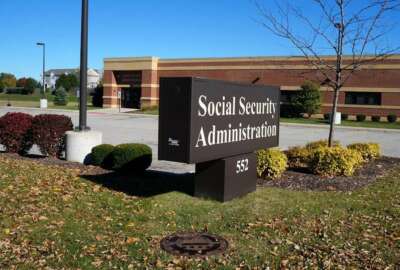
No news is good news: Retirement plans spared, again
Bills, budgets and proposals to whack federal retirement benefits used to be the stuff of nightmares for both workers and retirees under FERS and CSRS.
Bills, budgets and proposals to whack federal retirement benefits used to be the stuff of nightmares for both workers and retirees under the Federal Employees Retirement System and Civil Service Retirement System, which cover millions of people.
And for good reason — the choppers were serious and they had the clout, and some years the votes, to do damage. Now, not so much.
So what’s changed?
The threats are still out there with mostly Republican House members and the White House trotting out the same plans, year after year, to cut costs in future. But the track record is that those going after the “generous” FERS and CSRS plans lose interest about mid-year.
After a decade of regular annual attacks on the retirement plans, veteran feds with thick-skins aren’t spending as much time worrying about if they will have time to retire before the changes go into effect. For good reason — past proposals, from the House and sometimes in the White House budgets, have sought to make workers pay more for their benefits, see their annual cost-of-living adjustments reduced or eliminated.
Related Stories

OPM holds steady in processing retirement backlog
 Exclusive
Exclusive A practical approach to the retirement wave: How federal CFOs can minimize the impact
Metro subway workers in Paris went on strike last week to protest a government plan to reign in the country’s 42 public employee pension plans which give the French what may be the most generous retirement package in the world. Workers of the agency that runs the system can retire on average at age 55.7, according to The New York Times. And their pensions are based on their highest six-month average salary. Run your own personal numbers to see where you would be right now under that system — probably retiring, or retired, earlier than planned with a much bigger monthly benefit.
The trim-the-fatcat-bureaucrats proposals, known to many long-suffering feds as “the usual suspects” also include eliminating the FERS retirement supplement for people retiring before age 62. The supplement, can be worth many thousands of dollars for people retiring before they are eligible for Social Security. Ironically while billed as a reform the vast majority of feds who retire “early” are required to do so because of the nature of their jobs: Federal firefighters, law enforcement officers, air traffic controllers, and customs, immigration and border patrol agents who are favorites of President Donald Trump.
A retired union lobbyist said “FERS and lately CSRS have always been targets of Congress and they were serious targets. But the steam’s gone out … partly because holding down the deficit is no longer a serious issue and partly because Congress is spending more time away from the job … They don’t do budgets, haven’t for years, and now it’s a [continuing resolution] to keep the government running year after year.”
He said feds need to remain on alert “because anything can happen” and need to support groups that represent managers, retirees, and postal and federal workers.
But the days of constantly worrying about the retirement plan being chopped or abolished are “pretty much gone … at least for the rest of this year.”
Nearly Useless Factoid
By Amelia Brust
Using the same principle behind Lincoln Logs, the Timber Pavilion at the Hakone Open Air Museum in Tokyo, designed by Tezuka Architects, is composed entirely of 589 wooden beams laid across one another without any metal parts. The total floor area measures 528 square meters, and a huge colorful climbing net hangs from the center.
Source: Design.SpotCoolStuff.com
Copyright © 2025 Federal News Network. All rights reserved. This website is not intended for users located within the European Economic Area.
Mike Causey is senior correspondent for Federal News Network and writes his daily Federal Report column on federal employees’ pay, benefits and retirement.
Follow @mcauseyWFED



